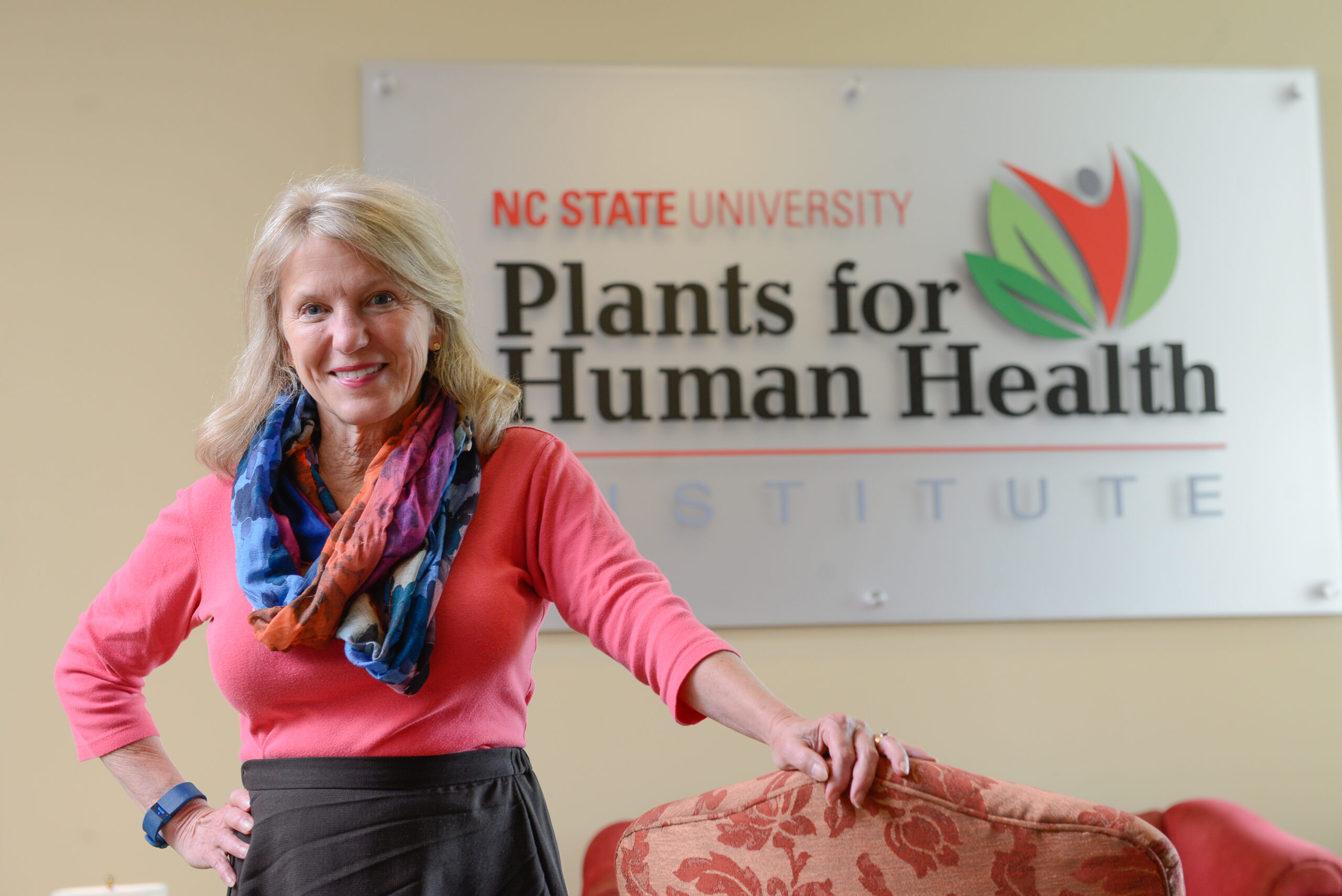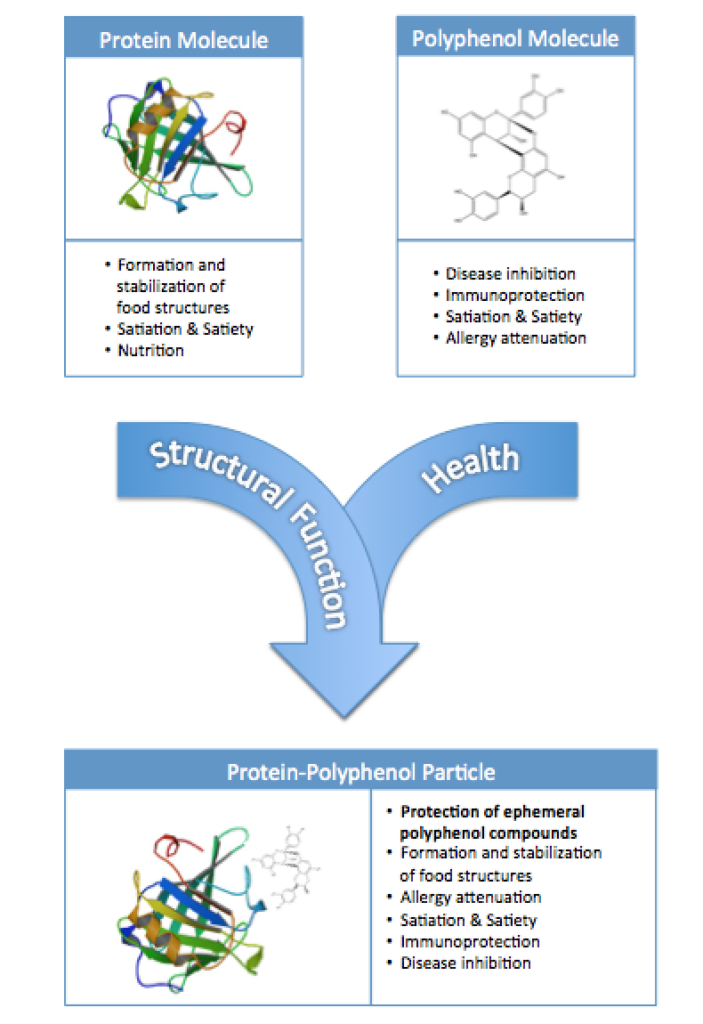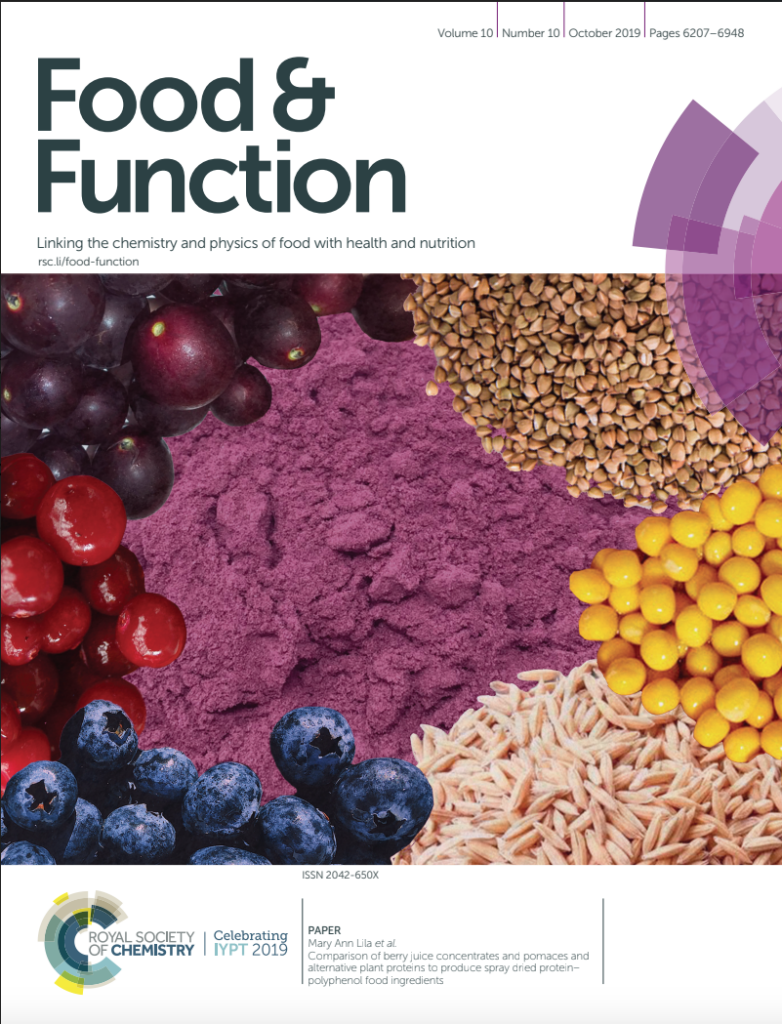Powerful Nutrition that Lasts

NASA is curious about what Dr. Mary Ann Lila is up to in her lab at N.C. State University’s Plants for Human Health Institute.
The U.S. Army is, too. Ditto for the Bill and Melinda Gates Foundation.
Dr. Lila has lots of interesting areas of research—like identifying plant compounds used by the medicinemen of Alaska’s indigenous people or exploring the rich anthocyanin profile of wild blueberries brought about by their ability to withstand severe environmental stress. But another area of her research, polyphenol-protein particle cohesion, doesn’t sound incredibly sexy at first. Basically, she’s fusing protein isolates (think of the protein powder we put into smoothies) with polyphenols (a phytochemical found in plants). The result of this binding, however, has countless applications and is more interesting that it first seems.
To illustrate, Dr. Lila places a small bag of pink powder on the table in front of her. The bag is only a couple inches large and fairly flat, but inside are two cups of cranberries. She took the polyphenols from the cranberries, complexed them with soy protein, and created a small amount of powder that retains all of the nutritional value of two cups of cranberries in a compact, shelf-stable form. It has no added sugar; it contains no added chemicals. And, as a bonus, it tastes good. She explains, “The protein softens the astringency of the cranberries.”

“What we’re doing is taking advantage of the natural attraction between proteins and polyphenols,” Dr. Lila says. “For most brands of high-protein bars, we can’t just buy in bulk when they go on sale, because even if they’re packaged well, the proteins continue to be active, with molecules that keep cross linking with each other and with other components. The more they link, the harder the bar becomes. After a few weeks, those bars become unpalatable. You can crack your teeth! We find that if we take the protein that’s in the bar, and complex it with a polyphenol, it prevents that hardening; and only 13 percent of the protein has to be done like this to achieve this effect.”
Shelf stable nutrition. With the possibilities this creates, it’s no wonder Dr. Lila has sparked so much curiosity. With this, the U.S. Army envisions a long-lasting nutritionally complete protein bar for soldiers in the battlefield. NASA thinks about sustaining astronauts on a three-month mission to Mars. And the Bill and Melinda Gates Foundation finds great potential in how this can be used to offer inexpensive, long-lasting nutrition to people in developing countries or areas experiencing droughts.
The product isn’t merely hypothetical. It’s already on shelves. Ripe Revival, a North Carolina company, has already produced Goodness Gummies using Dr. Lila’s research, delivering the nutrition of beets, blueberries, and pumpkin in a gummy, fruit chew form. Other companies are currently researching additional innovative products using Dr. Lila’s discovery.
The implications of this research may change nutrition for millions of people around the world. Highly nutritional, long-lasting food isn’t just suitable for astronauts on Mars but those of us who face a more mundane challenge: being busy.
“We all know what we’re supposed to eat,” Dr. Lila says. “We all know we’re supposed to eat between three and five fruits and vegetables a day, but we don’t. Even most doctors and scientists don’t. This is a way to deliver, in a concentrated format, all of the good things we need in a diet that we just won’t get otherwise.”

A clinical trial supported this concept. In this trial, athletes diluted a protein-polyphenol powder containing two cups of green tea and a cup-and-a-half of blueberries (two polyphenol-rich foods) into drinks each day for 17 days. After this time, blood tests showed that the participants had improved viral resistance and immunity. The combination of physical activity and concentrated nutrition yielded tremendous results, Dr. Lila says.
Products that use this research differ greatly from standard nutritional supplements. Usually, supplement ingredients are dried using intense heat, which can degrade the chemical structure of the healthy polyphenols. In addition, many spray-dried products require a filler, typically a sugar. Products from Dr. Lila’s research retain their nutrients: The protein protects the polyphenols from degradation in heat, and it eliminates the need for an unwanted sugar by acting as a carrier for the juice or extract. The result includes only food-grade materials that maintain their full nutritional values, allowing people to harness the power of nature in an efficient and pure form. For Dr. Lila, the beauty of this discovery is its simplicity; it relies on the natural nutrition found in the foods that people have eaten for centuries.
“This is about going back to nature, back to the wisdom of our elders,” Dr. Lila says. “We want to use their cues and make their solutions shelf-stable so that they can reach a wider audience.”
In the future, that audience may be soldiers on a battlefield, astronauts traveling to Mars, or even you, popping a few gummies and—along with them—all of the nutritional benefit of several cups of berries.
Relevant Publications
- Diaz, Joscelin, E. Allen Foegeding and Mary Ann Lila. 2021. Whey protein-polyphenol aggregate particles mitigate bar hardening reactions in high protein bars. LWT Food Science & Technology 138: 110747. https://doi.org/10.1016/j.lwt.2020.110747
- Diaz, Joscelin T., E. Allen Foegeding and Mary Ann Lila. 2020. Formulation of protein-polyphenol particles for applications in food systems. Food & Function 11:5091-5104. DOI: 10.1039/D0FO00186D
- Hoskin, Roberta, Jia Xiong and Mary Ann Lila. 2019. Comparison of berry juice concentrates and pomaces and alternative plant proteins to produce spray dried protein-polyphenol food ingredients. Food & Function 10: 6286-6299. DOI: 10.1039/c9fo01587f
- Foegeding, E. Allen, Nathalie Plundrich, Margaret Schneider, Caroline Campbell and Mary Ann Lila. 2017. Protein-polyphenol particles for delivering structural and health functionality. Food Hydrocolloids 72:163-173. https://doi.org/10.1016/j.foodhyd.2017.05.024
- Correia, Roberta, Mary H. Grace, Debora Esposito and Mary Ann Lila. 2017. Wild blueberry polyphenol-protein food ingredients produced by three drying methods: comparative physico-chemical properties, phytochemical content, and stability during storage. Food Chemistry 235:76-85. PMID: 28554650. doi 10.1016/j.foodchem.2017.05.042
- Categories: